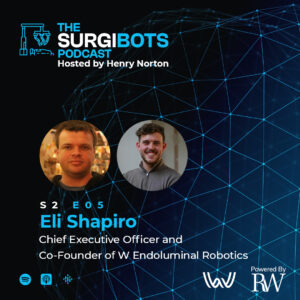Surgibots Podcast
S02 E05
Inside W Endoluminal Robotics
On Season 2 Episode 5 of The Surgibots Podcast I was joined by Eli Shapiro, the Chief Executive Officer and Co-Founder of W Endoluminal Robotics, to talk about the innovative system that the company is creating.
Listen/watch now

Listen/watch now



